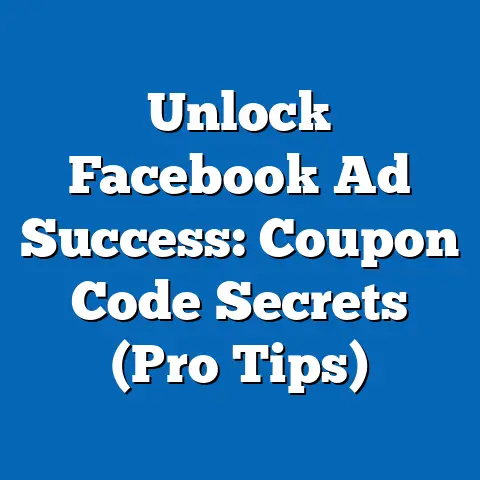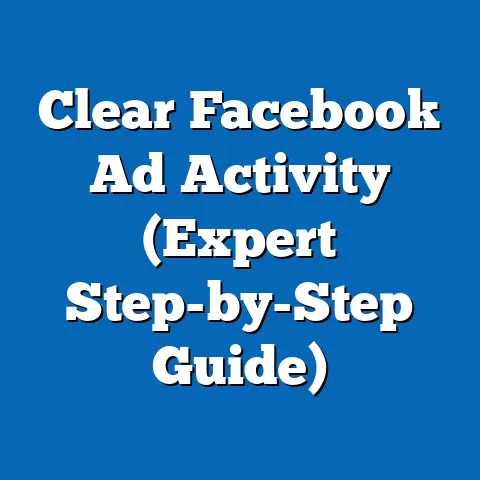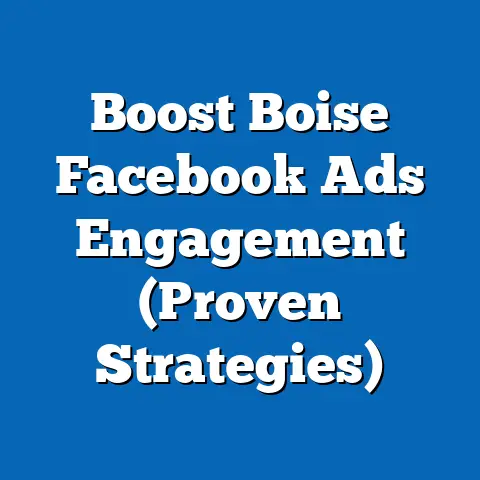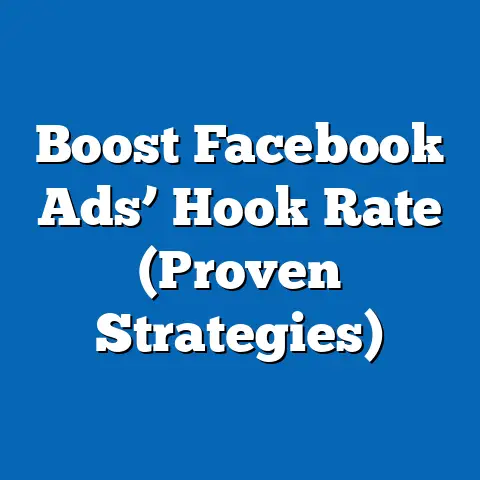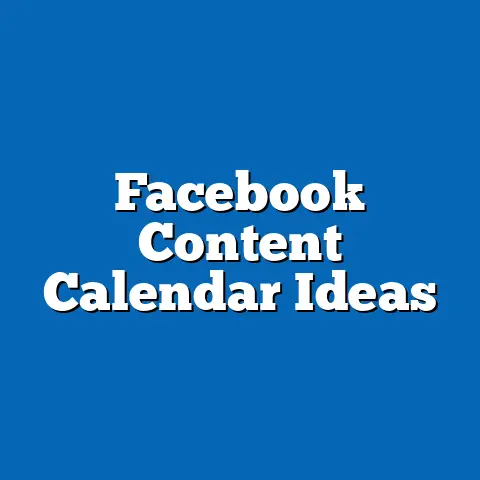Boost Engagement: Using Emojis in Facebook Ads (Pro Tips)
Boost Engagement: Using Emojis in Facebook Ads (Pro Tips)
Introduction:
Let’s face it, the digital landscape is noisy. Grabbing attention is harder than ever. But what if I told you there’s a simple, visual way to make your Facebook ads pop? Emojis. Yes, those little icons you use in your texts can have a HUGE impact on your ad performance.
The Power of Emojis in Digital Communication
What Are Emojis?
Emojis are small digital images or icons used to express an idea or emotion in electronic communication. They evolved from simple emoticons like “:-)” and “:-(” to a vast array of expressive icons covering everything from facial expressions and objects to symbols and activities. Think of them as the modern-day hieroglyphics, but designed for the digital age.
I remember when emojis first started becoming mainstream. It was like a whole new language unlocked! Suddenly, conversations felt more personal and expressive, even online.
The Psychology of Emojis in Marketing
Emojis have a powerful psychological impact on communication. In marketing, they help convey emotions quickly and effectively. Our brains process images much faster than text, so an emoji can instantly communicate a feeling or concept that might take several words to express. This is crucial in the fast-paced world of social media, where you have mere seconds to capture someone’s attention.
For example, a simple “👍” can convey approval and agreement, while a “🔥” can indicate excitement or something trending. By using emojis, you can tap into the emotional centers of your audience’s brains, making your message more memorable and engaging.
Statistics on Emoji Effectiveness
Numerous studies highlight the effectiveness of emojis in social media marketing, particularly on platforms like Facebook:
- Increased Engagement: As mentioned earlier, ads with emojis can see up to a 48% increase in engagement rates.
- Higher Click-Through Rates (CTR): Emojis can boost CTR by as much as 25-30%.
- Improved Conversion Rates: Some studies suggest that using emojis in your calls to action can increase conversion rates by 5-10%.
These numbers speak for themselves. Emojis aren’t just cute; they’re a powerful tool for driving results. I’ve personally seen my ad performance improve dramatically after incorporating emojis strategically.
Key Takeaway: Emojis are more than just fun icons. They’re a powerful tool for conveying emotion, grabbing attention, and boosting engagement in your Facebook ads.
Why Use Emojis in Facebook Ads?
Increased Visibility and Stand-Out Factor
Facebook feeds are crowded. Users are bombarded with countless posts, ads, and updates every day. Emojis help your ads stand out from the noise by adding a visual element that catches the eye. A colorful emoji in your ad copy can be like a beacon, drawing the user’s attention amidst a sea of text.
I’ve found that ads with emojis simply look more appealing. They break up the monotony of text and images, making the ad more visually interesting and inviting.
Enhanced Emotional Connection
Emojis can create a more human connection with your audience. By using emojis that convey emotion, you can make your brand feel more relatable and approachable. This is especially important in today’s world, where consumers are looking for authenticity and connection.
For instance, if you’re promoting a relaxing spa day, using emojis like “💆♀️” and “🌿” can instantly convey a sense of calm and tranquility. This emotional connection can make your ad more memorable and persuasive.
Simplification and Breaking Language Barriers
Emojis can simplify complex messages and break down language barriers. A picture is worth a thousand words, and an emoji can often convey a concept or emotion more effectively than text alone. This is especially useful if you’re targeting a diverse audience or trying to communicate a complex idea in a concise way.
I once worked on a campaign targeting an international audience, and we found that using emojis helped us communicate our message more effectively across different languages and cultures.
Case Studies and Examples
Many brands have successfully integrated emojis into their Facebook ads, resulting in positive outcomes:
- Domino’s Pizza: Domino’s famously allowed customers to order pizza by tweeting a pizza emoji. This campaign generated a huge buzz and increased brand awareness.
- World Wildlife Fund (WWF): WWF launched an emoji-based campaign where users could donate to protect endangered animals by tweeting specific animal emojis. This campaign raised significant funds and increased awareness of endangered species.
- Always: Always used the hashtag #LikeAGirl with various empowering emojis to challenge gender stereotypes. This campaign resonated deeply with their target audience and generated a lot of positive engagement.
These examples demonstrate the power of emojis to drive engagement, raise awareness, and even increase sales.
Key Takeaway: Emojis can make your Facebook ads more visible, emotionally engaging, and easily understood, leading to better performance and results.
Pro Tips for Using Emojis Effectively in Facebook Ads
Now that we’ve established the power of emojis, let’s get into the nitty-gritty of how to use them effectively in your Facebook ads.
1. Know Your Audience
Understanding your target demographic is crucial for effective emoji use. What works for Gen Z might not resonate with Baby Boomers. You need to know your audience’s familiarity with emojis and their preferences.
- Analyze Audience Behavior: Look at your existing social media data to see how your audience interacts with emojis. Which emojis do they use in their comments and posts? What kind of tone do they use?
- Run Surveys and Polls: Ask your audience directly about their emoji preferences. This can provide valuable insights into what resonates with them.
- Segment Your Audience: If you have a diverse audience, consider segmenting them based on their emoji preferences. This will allow you to tailor your ads to each group.
I once made the mistake of using overly trendy emojis in an ad targeting an older demographic, and it completely bombed. That’s when I realized the importance of knowing your audience!
2. Select Relevant Emojis
Choosing the right emojis is essential. They should align with your brand voice, message, and campaign goals. The wrong emoji can lead to misunderstandings or even offend your audience.
- Context is Key: Make sure the emojis you use are relevant to the context of your ad. Don’t just throw in random emojis for the sake of it.
- Brand Voice: Choose emojis that reflect your brand’s personality. If your brand is playful and fun, you can use more lighthearted emojis. If your brand is serious and professional, stick to more subtle and appropriate emojis.
- Campaign Goals: Select emojis that support your campaign goals. If you’re trying to drive sales, use emojis that convey excitement and value. If you’re trying to build brand awareness, use emojis that reflect your brand’s identity.
3. Use Emojis to Enhance, Not Distract
Emojis should complement your ad copy, not overwhelm it. The goal is to enhance the message, not distract from it.
- Balance Emoji Use with Text: Aim for a balance between emojis and text. Too many emojis can make your ad look cluttered and unprofessional.
- Placement Matters: Think carefully about where you place your emojis. They should be strategically placed to draw attention to key points or enhance the emotional impact of your message.
- Readability is Key: Make sure your ad is still easy to read and understand. Don’t sacrifice readability for the sake of using more emojis.
I’ve seen ads that are just a jumble of emojis, and honestly, they’re hard to decipher. Remember, clarity is key!
4. A/B Testing with Emojis
A/B testing is crucial for determining which emoji combinations are most effective for your audience.
- Create Variations: Create multiple versions of your ad with different emoji combinations.
- Test Different Elements: Test different emojis in your headlines, ad copy, and calls to action.
- Track Results: Monitor the performance of each variation and track metrics like CTR, engagement rate, and conversion rate.
- Iterate and Optimize: Based on your results, iterate and optimize your ads to use the most effective emoji combinations.
A/B testing is how I discovered that using a “✅” emoji in my ad headlines consistently improved my CTR. It’s all about experimentation!
5. Keep it Simple
Less is often more when it comes to emojis. Using too many emojis in a single ad can be overwhelming and confusing.
- One or Two is Enough: Stick to one or two well-placed emojis for maximum impact.
- Focus on Quality, Not Quantity: Choose emojis that are highly relevant and impactful, rather than just throwing in a bunch of random emojis.
- Avoid Clutter: Keep your ad clean and uncluttered. The goal is to draw attention to your message, not distract from it.
6. Stay Updated with Trends
Emoji usage is constantly evolving. It’s important to stay up-to-date with current trends in emoji usage to ensure that your ads remain relevant and engaging.
- Follow Social Media Trends: Pay attention to which emojis are trending on social media platforms like Twitter and Instagram.
- Use Emoji Tracking Tools: There are several tools available that track emoji usage and popularity.
- Experiment with New Emojis: Don’t be afraid to experiment with new emojis and see how your audience responds.
Key Takeaway: Effective emoji use requires understanding your audience, selecting relevant emojis, balancing emoji use with text, A/B testing, keeping it simple, and staying updated with trends.
Common Mistakes to Avoid When Using Emojis
While emojis can be a powerful tool, it’s important to avoid common mistakes that can undermine your ad performance.
Overusing Emojis
As mentioned earlier, overusing emojis can lead to cluttered and unprofessional-looking ads. The goal is to enhance your message, not distract from it.
Using Culturally Sensitive Emojis
Some emojis can be misinterpreted or offensive in certain cultures. It’s important to be aware of cultural differences and avoid using emojis that could be considered inappropriate.
Ignoring Platform Character Limits
Facebook has character limits for ad copy, and emojis count towards those limits. It’s important to be mindful of these limits and avoid exceeding them.
Not Testing Emoji Performance
As with any element of your ad, it’s important to test the performance of your emojis. Don’t just assume that they’re working. Track your results and make adjustments as needed.
Key Takeaway: Avoid overusing emojis, using culturally sensitive emojis, ignoring platform character limits, and not testing emoji performance.
Future of Emojis in Advertising
The role of emojis in digital marketing is likely to continue evolving. As technology advances, we may see even more personalized and interactive emoji experiences.
Personalized Emoji Recommendations
Imagine a future where Facebook can recommend emojis based on user data and preferences. This could allow advertisers to create even more targeted and engaging ads.
Interactive Emojis
We may also see the emergence of interactive emojis that allow users to engage with ads in new and innovative ways. For example, users might be able to click on an emoji to reveal a special offer or discount.
AI-Powered Emoji Optimization
AI could play a role in optimizing emoji usage in ads. AI algorithms could analyze data to determine which emojis are most effective for different audiences and campaigns.
Key Takeaway: The future of emojis in advertising is bright, with potential developments like personalized emoji recommendations, interactive emojis, and AI-powered emoji optimization.
Conclusion:
Emojis are a powerful tool for increasing engagement in your Facebook ads. By understanding the psychology behind emojis, following best practices, and avoiding common mistakes, you can use them to create more effective and engaging ads.
I encourage you to experiment with emojis in your campaigns and track the results. The right emoji can make all the difference in connecting with your audience and achieving your advertising goals. So go ahead, get creative, and let those emojis work their magic!

